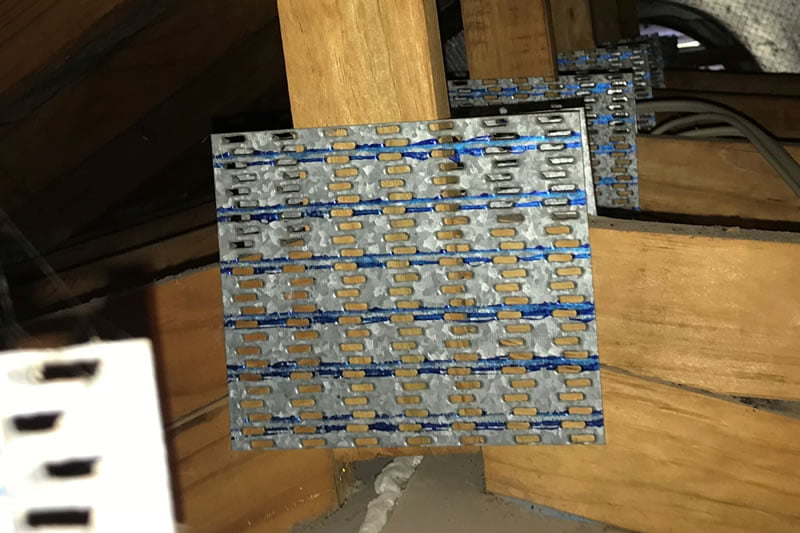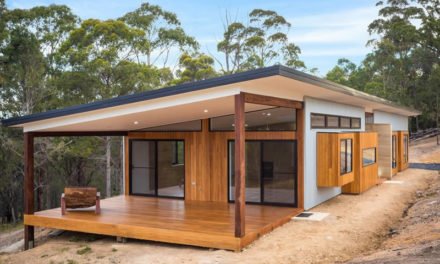Being in the wrong place can be grim, or flat-out dangerous.
I’m writing this while on a plane, which brings with it challenges: not enough elbow room, turbulence, the guy behind is snoring and the kid across the aisle is whinging about the entertainment. But that’s nothing compared with a recent flight to Oslo.
I’m a Scout Leader and we were on our way to the Norwegian Jamboree with 70 kids. One girl in the middle of the middle row got the chucks. The wife of another leader had the unenviable job of managing the sick bag. I was stretching in the aisle at that stage but, as the caring Scout Leader that I am, I was conveniently ignoring the vomit drama.
But the drama didn’t ignore me; as I walked past, the paper bag reached capacity. In fact, beyond capacity. In desperation, the vomit-bag-manager thrust the swollen bag into my hands… just in time for the thing to disintegrate. A good litre of mulched airline food slumped through my fingers, down my front and onto my shoes. I guess I was lucky that most made its way onto the carpet.
The reaction of the surrounding passengers was of overwhelming horror. I was suddenly the leper; some faces averted, some looked on in sympathy. Some, I’m sure, would have paid good money to get me away from them. Several started gagging in sympathy.
As the warmth seeped into my shoes, nobody put up their hands to help. Even the airline staff found something else to do. So, in the spirit of the ‘Scout Law’ there was nothing to do but to scoop up handfuls of vomit and put them in a plastic blanket bag.
That has nothing to do with what I am about to write about next, other than that being on a plane is giving me flashbacks. Writing about it forms part of my recovery therapy. So, as they say, it’s time to move on.
Our industry owes its existence to Carl Sanford’s invention of the nailplate. With billions in service in Australia alone they are an amazing product that has revolutionised domestic construction. Millions of Australians live under their ‘umbrella’. Remarkably, despite the variability in timber, they just don’t fail when used properly. Onya Carl.
There have of course been a few trussed roof failures. But most often they are the result of some misadventure on site: being erected out of plumb, not restrained properly and being bastardised by following trades feature high on the list of causes.
On those rare cases where fabrication is the cause, it is missing or misplaced nailplates that feature as a primary problem.
Missing the plate on the underside of the truss when pressing would have to be the worst offence… “I thought you put the plate on” … “No, no I thought you put the plate on.” I have only seen it a couple of times and in both cases, things haven’t gone well.
But by far the most common problem is plate misplacement. There is misplacement because for some reason the wrong location was selected. And there is misplacement due to sloppiness. Misplacement allowed for in the design is typically just 5mm, which is actually a very tight tolerance when you have to get it right a thousand times a day.
Depending on how conservative your settings are in plate selection, and how lucky you are, a larger misplacement may not necessarily result in an actual failure. But it’s worth knowing that there are some joint configurations that are more susceptible to a failure than others due to misplacement.
Perhaps the worst is a scissor bottom chord apex with the centre vertical cut through, as shown in the photo above As a rule, truss chords have the highest loads and, with this sort of joint, only a fraction of the plate covers the bottom chords. The effective plate coverage on the bottom chord is even less than it seems visually because the row of teeth nearest the end grain is ineffective. So, even a small vertical or lateral misplacement can result in a large percentage reduction in strength. The plate shown here is misplaced about 10mm and is structurally inadequate.
Part of the problem comes from a large proportion of the plate being wasted covering the web, which isn’t highly loaded. A V-cut vertical would give a stronger joint.
Other joints where this problem tends to loom large are hips (knees) and heels. In all these cases the highish loads, geometry and end grain is working against you. So, if you are going to focus on quality control in the factory, here is a good place to start.
At this point, lets head again to Norway! It’s a beautiful, spectacular country and the people are friendly and very chilled. We Aussies are nervous wrecks beside them.
The culture of blame hasn’t taken root there so drops are unfenced, scouts carried knives on their belts and climbing a massive, dodgy scout-made tower of ropes and spars is no problem. If you fall it’s your fault for being a stupid scout. Alas, many of them are.
In summer with 24-hour daylight, your body clock quits trying, so sleep becomes virtually optional. And get this weather forecast: wet and overcast today; sunny tonight!
Paul Davis is an independent structural engineer managing his own consulting firm Project X Solutions Pty Ltd. The views in this column are Paul’s and do not reflect the opinions of TimberTrader News. Phone: 02 4576 1555 Email: pauldavis@timbertradernews.com
Image: A misplaced nailplate that is significantly structurally inadequate.












